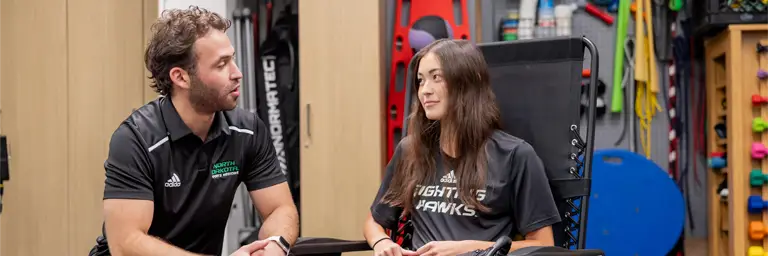Master's in Athletic Training
Help keep individuals healthy and physically active while acquiring fundamental healthcare knowledge and techniques.
UND transitioned its athletic training program to the Master of Athletic Training as mandated by the Commission on Accreditation of Athletic Training Education (CAATE). Students interested in the program are encouraged to contact the Department of Sports Medicine.
- Program type:
- Master's Degree
- Format:
- On Campus
- Est. time to complete:
- 2 years
- Credit hours:
- 81
Why earn a master's in athletic training?
Athletic Training Master's Programs
-
Learn how to properly rehabilitate injuries and medical conditions.
-
Conduct clinical rotations at area high schools and with patients at the UND Center for Sports Medicine, our on-campus outpatient rehabilitation clinic.
-
Connect with classmates in the Student Athletic Trainer's Organization (SATO).
-
Get personal attention with an average class size of 12.
-
Gain healthcare knowledge in primary care, injury and illness prevention, wellness promotion and education, and more.
-
Work with some of the University of North Dakota's 500+ varsity athletes in 17 sports.
What can I do with a master's in athletic training?
Athletic Training Master's Courses
Leaders in Health
Follow your passion and develop the skills to lead and shape the future of healthcare.
